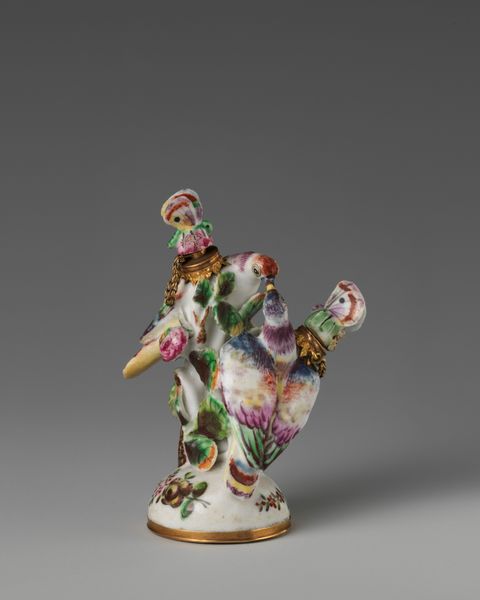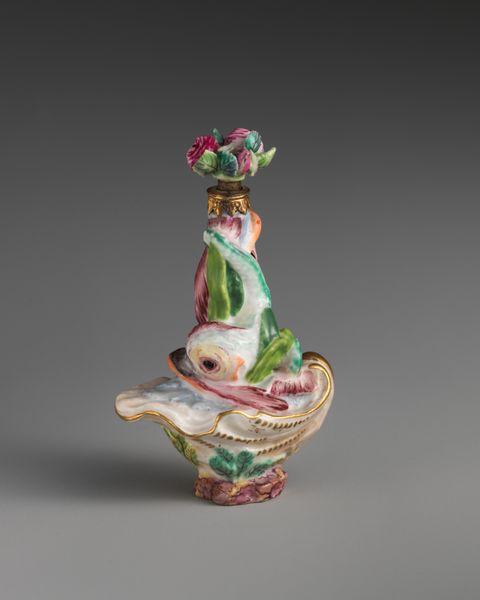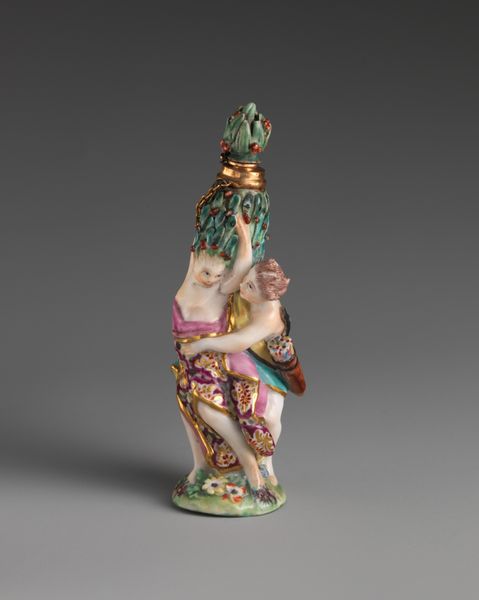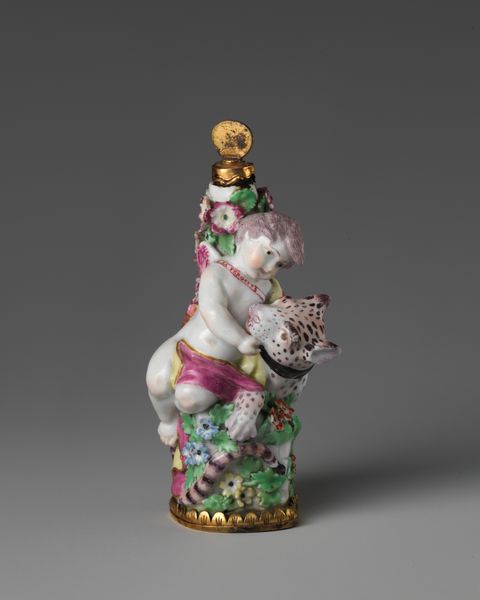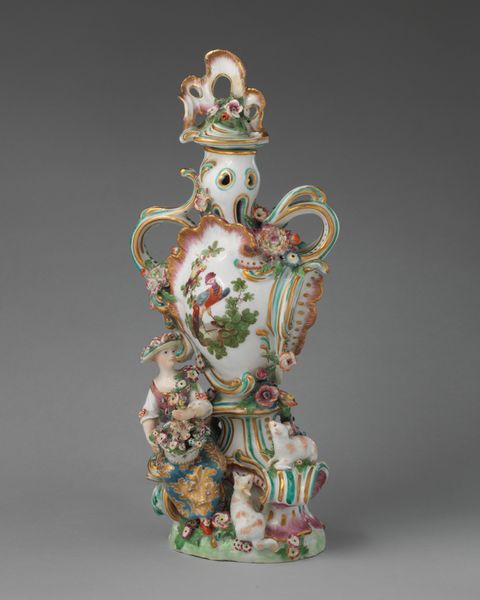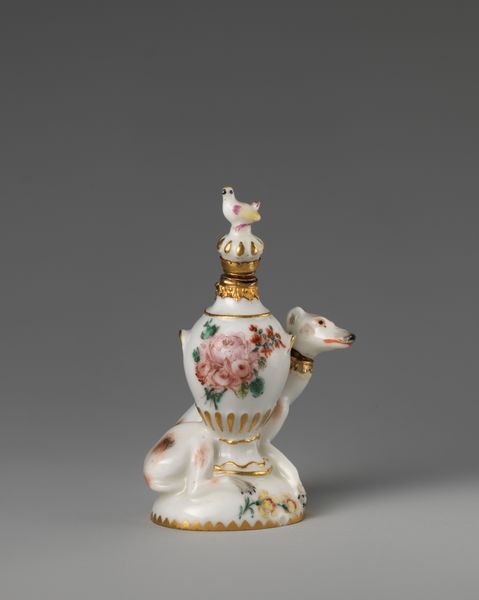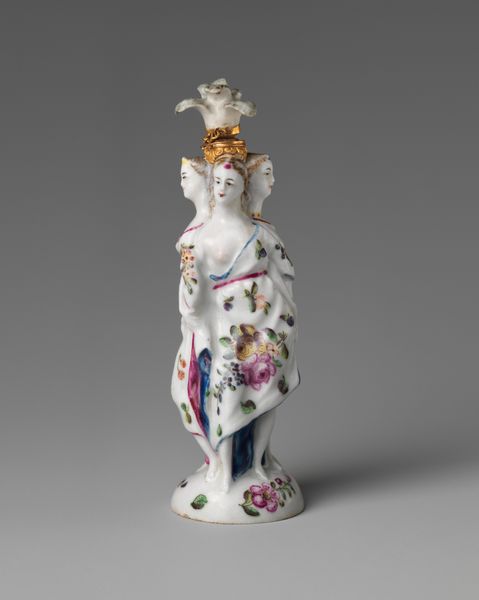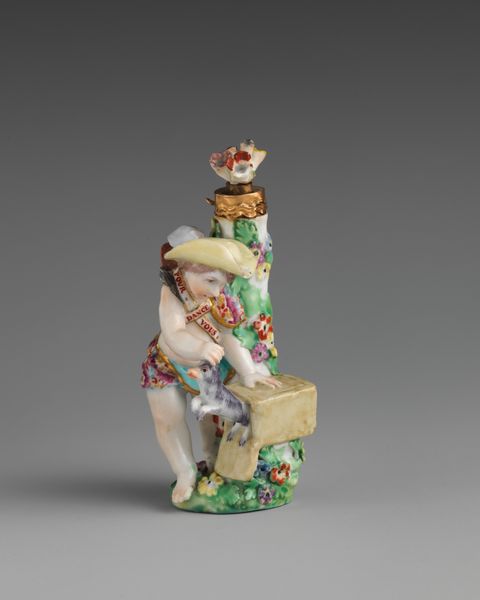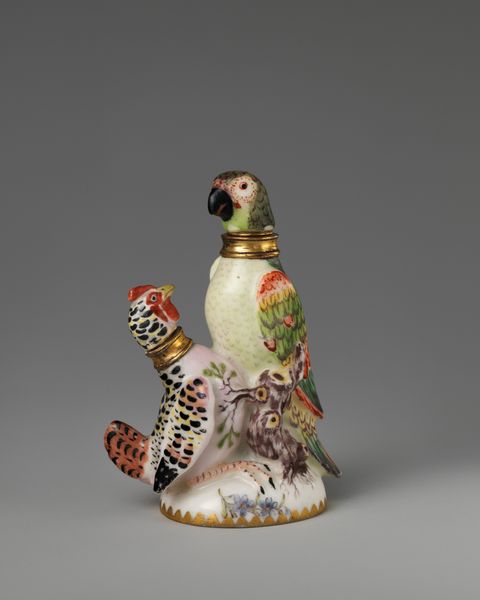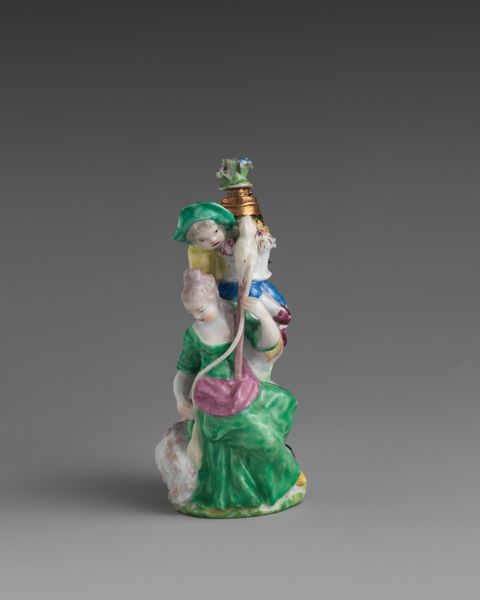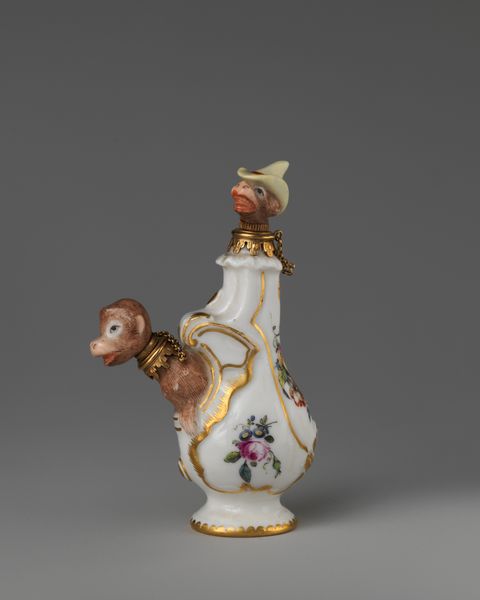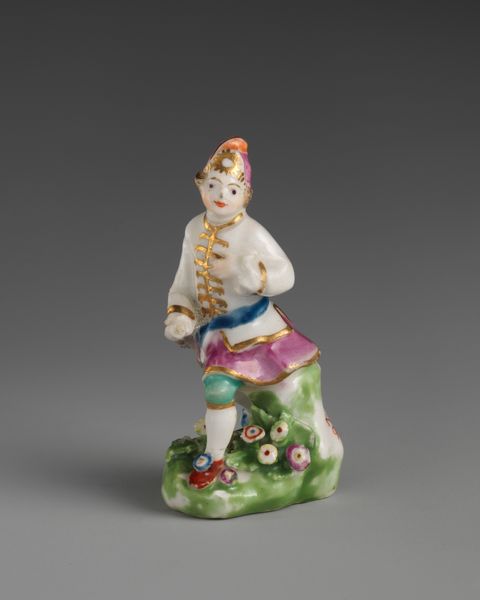
Hen and chickens in a group 1750 - 1760
0:00
0:00
ceramic, porcelain, sculpture
#
ceramic
#
porcelain
#
figuration
#
sculpture
#
decorative-art
#
rococo
Dimensions: Overall: 3 × 2 1/8 in. (7.6 × 5.4 cm)
Copyright: Public Domain
Curator: The playfulness is immediate, isn't it? This is a ceramic porcelain sculpture from the Chelsea Porcelain Manufactory, dating to around 1750 to 1760. The title is "Hen and chickens in a group." Editor: It has such a light, almost saccharine feel to it. The colours are so soft and the forms rounded— it screams Rococo. Curator: Indeed, it's a fantastic example of the Rococo aesthetic. Notice the intentional artifice – how it abstracts and prettifies a familiar farmyard scene. What cultural resonances might that have carried? Editor: I see how the clustering creates this almost pyramidal structure. And those ornamental floral designs around the base aren't simply decorative, but seem integral to holding and grounding this odd upward movement. Curator: Exactly! Chickens as symbols are complex. On one level, their domestic role suggests care and provision – the hen protecting her young. But think about the material too. Porcelain itself, in this period, signifies wealth and status. It elevates a common barnyard animal to the level of a treasure. Editor: It's interesting how the glaze is distributed— thicker in areas to create highlights and give volume to each fowl, but quite spare elsewhere. The effect enhances the subtle polychrome details, like the shading of the feathers. Curator: The little gold stoppers that form a circle at the chicken necks seem almost jewel-like; it disrupts any plain interpretation of "motherhood". It could signify control of nature, or a commentary on social hierarchies reflected even within animal portrayals. This kind of Rococo table decoration could have facilitated discourses among those using them. Editor: I'd not considered how these "trivial" objects function discursively within the upper classes! The clustering of the animals creates rhythm—leading my eye upwards but it still stays centered on the sculptural arrangement as a whole. Curator: I will certainly carry those considerations of structure with me. Thanks for sharing. Editor: It's given me an interest to examine the deeper historical implications in a genre of objects previously understood merely as decorative and “pretty”.
Comments
No comments
Be the first to comment and join the conversation on the ultimate creative platform.
